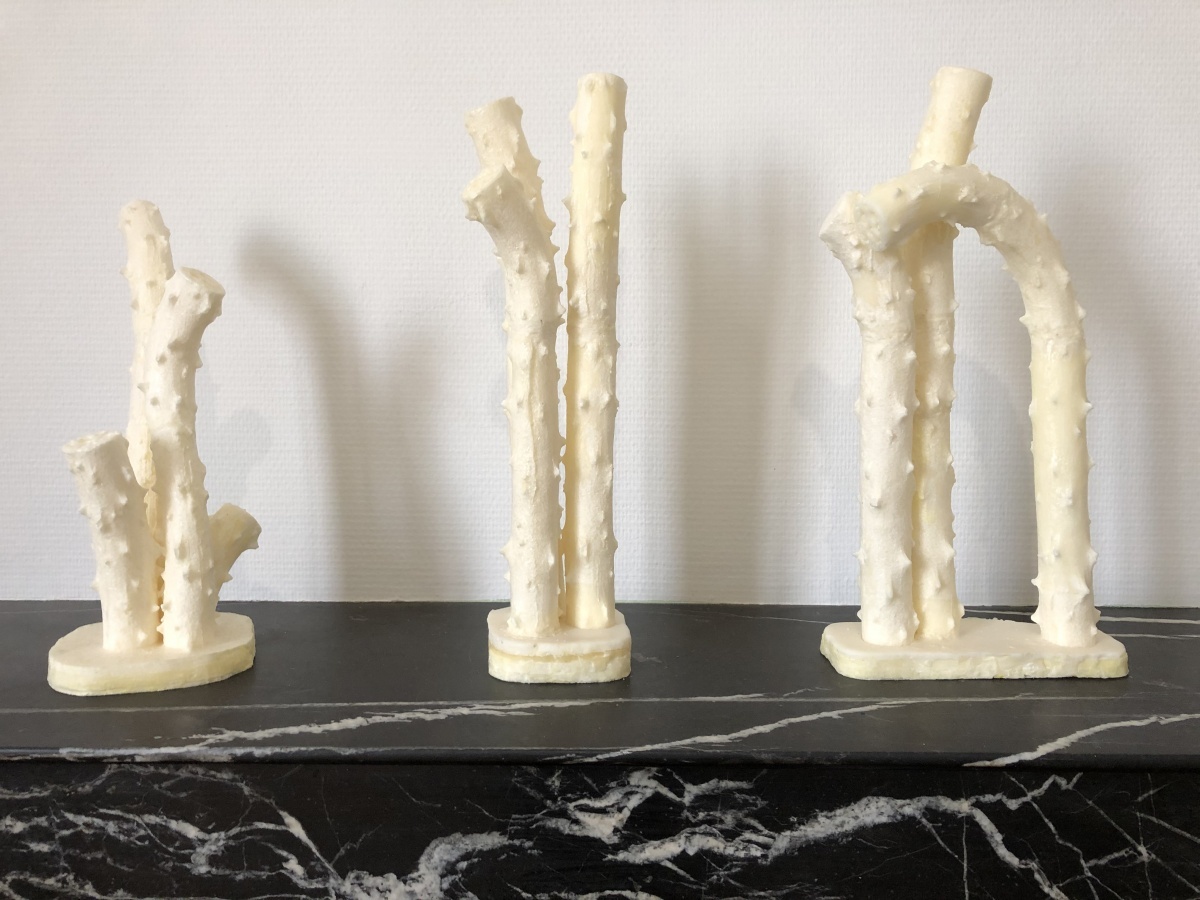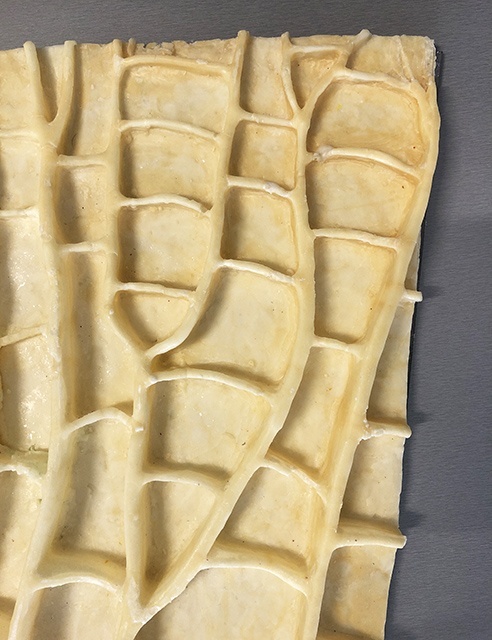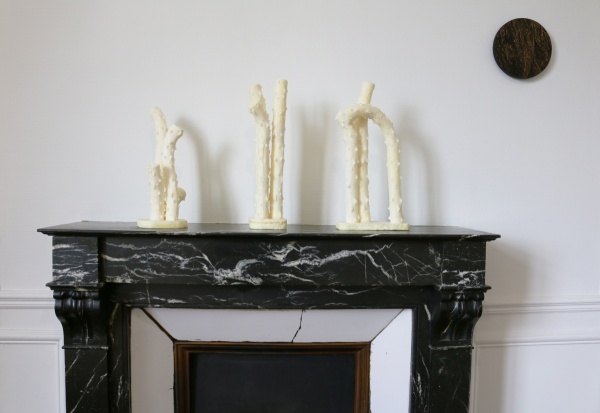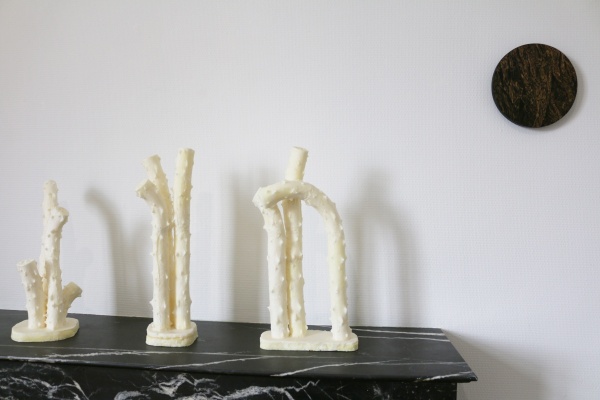waxtoria, 2018
Sculptures in rapeseed wax
Pieces created during a residency at the Berlin Botanical Museum
These sculptures in rapeseed wax are based on an interest in the history of Victoria Amazonica water lilies, the attraction they have provoked and their difficult acclimatization in our latitudes. This is a scale interpretation of the dry elements of this species, inspired by botanical models, scientific sculptural pieces representing enlarged parts of plants used to study their physiology. The forms are inspired by Models, the studies of enlarged plant parts that served as objects of study for students.
With their spectacularly large leaves, the structure of which can support the weight of a child, the victorias amazonica reveal our European attitudes to controlling nature. Imported in costly large-pond greenhouses, these tropical aquatic plants reflect our attraction to exoticism, taxonomy and possession. It's our European history of adapting plants cultivated in botanical gardens.
Plant waxes are products of industrial agriculture. Their glittery or translucent appearance is fascinating and precious, yet it is the product of intensive monoculture cultivation of rapeseed or even oil palm. Our needs and desires are shaped by this unsustainable economy. The Palmatomania or waxtoria series of pieces, inspired by plant forms, is a perfect example of this. Our needs and desires are shaped by this unsustainable economy. The Palmatomania and waxtoria series of pieces, using plant forms, bring them to light, questioning our complex relationship with these materials derived from cultivated plants.
In the history of botanical science, wax has often been used to make life-size plant models, usually of plants newly introduced to Europe, which were in fact rarities when they were modeled.







